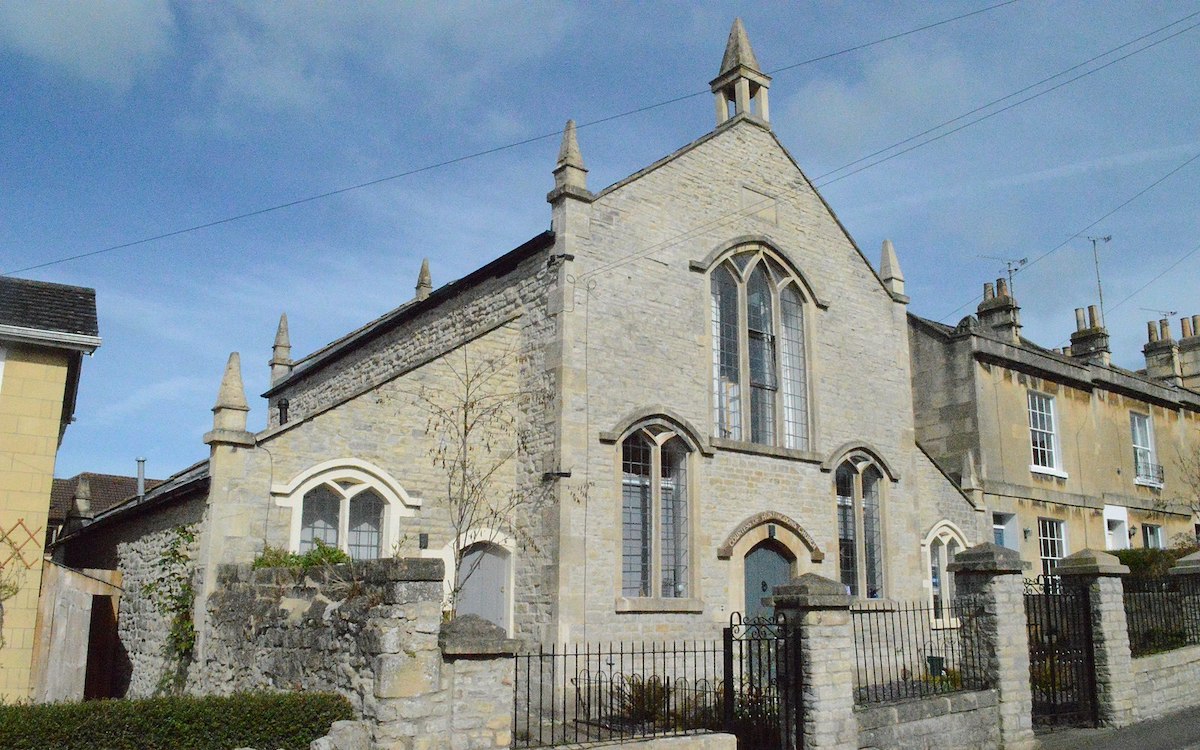Among the central figures of the British evangelical revival that we have been revisiting is Selina, Countess of Huntingdon, (1707–1791). She was a source of finance and a steadying influence, and through her aristocratic connections Selina provided opportunities for the preaching of the gospel in the upper echelons of society. Selina managed to maintain largely warm friendships with the Wesley brothers and George Whitefield, but increasingly favoured Whitefield’s moderate Calvinism. She was a pioneer of church planting and was eventually forced out from the established Church of England—no small thing for a countess.
Selina was born in 1707 to the second Earl Ferrers and his wife, Mary, into a somewhat divided and complicated aristocratic family. In 1728 she married Theophilus Hastings, the ninth Earl of Huntingdon. Their marriage was a happy one, with Selina taking her roles as wife and mother very seriously. The couple had six children and lamented when they were apart from each other. Tragically, the earl died in 1746, aged 49, and only one of the children outlived the countess herself.
Religion was taken seriously in the Huntingdon household even before Selina’s arrival. The earl’s sisters and half-sister were all devout Christians. For Selina, conversion came in the summer of 1739, almost certainly under the influence of Lady Margaret, one of the earl’s sisters. We do not know the details but there was contact between Margaret and Selina in early summer 1739, and by July Margaret was praising the good work the Lord had done in Selina’s heart. The earl’s own position is uncertain, but he was tolerant of his wife’s newfound faith.
Selina’s influence on the nascent evangelical revival grew quickly and included her playing host to attendees at the first Methodist Conference in 1744; contact with Philip Doddridge, a leading dissenting minister, and Howell Harris, a pioneer of the revival in Wales; and, as mentioned, friendship with the Wesleys and George Whitefield, whose influence over Selina gradually grew.
From around 1744 onward, Selina began to invite her aristocratic friends (her “circle”) to gather at her home to hear Whitefield speak, an activity that accelerated after Whitefield’s return from visiting the American colonies in 1748, upon which Selina appointed him as her chaplain. Whitefield commented that he went “with fear and trembling, knowing how difficult it is to speak to the great so as to win them to Jesus Christ.” On August 30, 1748, Selina wrote excitedly to Philip Doddridge that she had held “two large assemblies at my house of the mighty, the noble, the wise & the rich to hear the Gospel by Mr Whitefield and I have great pleasure in telling you they all expressed a great deal in hearing of him.” Two attendees, Lord Bolingbroke and Lord Chesterfield, referenced Whitefield’s eloquences and oratory. Another, however, the Countess of Suffolk, flew into a rage, commenting that it was “monstrous to be told that you have a heart as sinful as the common wretches that crawl the earth.”
One of Selina’s central strategies was the development of chapels to which she would appoint chaplains to ensure the preaching of the gospel, which, in the eyes of the evangelical pioneers, was far from guaranteed in a traditional parish church. As an English aristocrat, she was uniquely positioned to achieve this aim. She supported Whitefield’s efforts to raise funds for his Moorfields Tabernacle in London, but much more was needed than just money. Among the principal problem was the power and control of the bishops over the building, the staffing, and the conduct of worship within the Established Church. There was, however, an ingenious solution. There was a long-standing right for the aristocracy to form a private chapel attached to their home and to appoint a chaplain with control outside the jurisdiction of the bishop. Significantly, members of the public could be invited to attend worship in the chapel, including celebrations of the Lord’s Supper—in essence, an alternative to the parish church. The countess moved into action.
In 1761 Selina opened a chapel in the fashionable south coast town of Brighton, adjacent to a house she had acquired. In Wivelsfield, Sussex, the countess rented a house and converted part into a chapel; after its opening, the Reverend William Romaine reported a hundred communicants. In 1764–65, Selina moved to construct a chapel in Bath. Chapels were also opened in Lewes, Tunbridge Wells, and elsewhere. All these early chapels were attached to homes the countess owned or leased. Naturally, she was not always present and, indeed, the houses were sometimes let to tenants.
In supplying her chapels, Selina drew upon the evangelical clergy of the Church of England, who themselves had differing views on the propriety of preaching outside their own parish; they also had responsibilities of their own to discharge. Consequently, Lady Huntingdon needed to make a longer-term provision for her pulpits. Working with Howell Harris, the pioneer of the evangelical revival in Wales, she sought to implement a vision, long shared by Harris, for an academy or school for preachers. The college was opened in Trevecca, South Wales, in 1768 under the leadership of the Reverend John Fletcher, Vicar of Madeley in Shropshire. Oddly, Fletcher was staunchly anti-Calvinist, illustrating the complexity of relationships among the revival’s participants. Yet Fletcher saw Selina as a soul devoted first and foremost to Jesus.
The aim of the new college of preachers was intellectual and practical. Selina’s vision was to ensure a steady flow of ministers for both the Church of England and the nonconformist chapels. The college had a shaky history over the coming years, with doctrinal disputes and concerns about spiritual vitality—and indeed finance. Students from the college were treated with much suspicion by Established Church authorities, needless to say.
In turn, Lady Huntingdon, in good old-fashioned evangelical style, was highly suspicious of the bench of bishops. She had a passion for the gospel and recognized that both Church of England and independent congregations posed political and doctrinal problems for evangelicals of opposing Arminian and Calvinist convictions. She wanted to break the mould. The extraordinary story of Spa Fields Chapel certainly illustrates this passion and determination.
Spa Fields was an area close to the Clerkenwell district of London, right on the boundary of the City of London, very near the central financial and legal districts. Northampton Chapel opened in 1777 with the support of the countess. The chapel was registered under the Toleration Act 1689 as an independent chapel, yet it was two evangelical ministers of the Church of England, Herbert Jones and William Taylor, who agreed to provide the religious services.
The chapel was within the parish of St James, Clerkenwell. The official minister, William Sellon, asserted his rights against the two clergy operating within his parish and laid charges in the ecclesiastical court of the Bishop of London. Jones and Taylor were convicted of preaching in a dissenting chapel and conducting worship in a parish to which they were not licensed. The preachers were silenced and the chapel closed. Selina was incandescent.
The countess made her move and acquired the lease, which she was able to do as the building was not owned by the Church of England. Alterations were made to the chapel to provide accommodation for the countess—after all, this was to be yet another personal chapel of a peeress of the realm! One of her chaplains, Thomas Haweis, presided over the opening on March 28, 1779, of Spa Fields Chapel. William Sellon again instituted legal proceedings against Haweis and subsequently two others, Cradock Glascott and Thomas Wills, claiming that they required his permission to preach in the chapel.
The defense was the privileged protection of the rights of the peerage to provide chapels and that the matter was outside the jurisdiction of the court. The prosecution case was simple: a chapel with seating for thousands, a public entrance, and tickets sold for seating could not in any reasonable manner be construed as a private chapel. This evangelical edifice, built on a rather shaky foundation, was about to fall.
In May 1780, judgment was given against the Spa Fields chaplain Haweis. The case against Glascott and, in time, Selina’s other preachers was now entirely predictable. The only avenue now open to the countess to protect any of her chapels was to register them under the Toleration Act of 1689 as dissenting meeting houses and to leave the Church of England completely. She told her clergy supporters that she was ready to go to prison with them (the possibility, though remote, lay in the possibility of a cleric being found in contempt of court), and in a letter to a former student declared, “I am to be cast out of the Church for what I have been doing these forty years—speaking and living for Jesus Christ.” Two of the chaplains, William Taylor and Thomas Wills, joined Selina and seceded from the Church of England; the other two remained. None of the well-known names in the Established Church joined the secession. This marked the beginning of what became known as the Countess of Huntingdon’s Connexion.
Lady Huntingdon exemplified both the strengths and weaknesses of the evangelical revival. Tenacity, commitment, passion, and a love that extended across theological divisions in tandem with a desire to remain within the bounds of the Church of England were all markers of both the countess and a significant section of the movement. Yet, some poor judgments, lack of proper planning and provision, even a lack of focus all contributed to the rather modest success of her longer-term enterprise. The gospel, however, prospered through her. Both Wesleyan and Calvinist branches of the revival were on their way to being organized outside the Established Church—against the wishes of their founders, it should be noted (though for both these movements, the imperatives of the gospel triumphed over church order). Mourning Lady Huntingdon’s passing in 1791, the evangelical minister John Berridge remarked, “Another pillar is gone to glory.”

